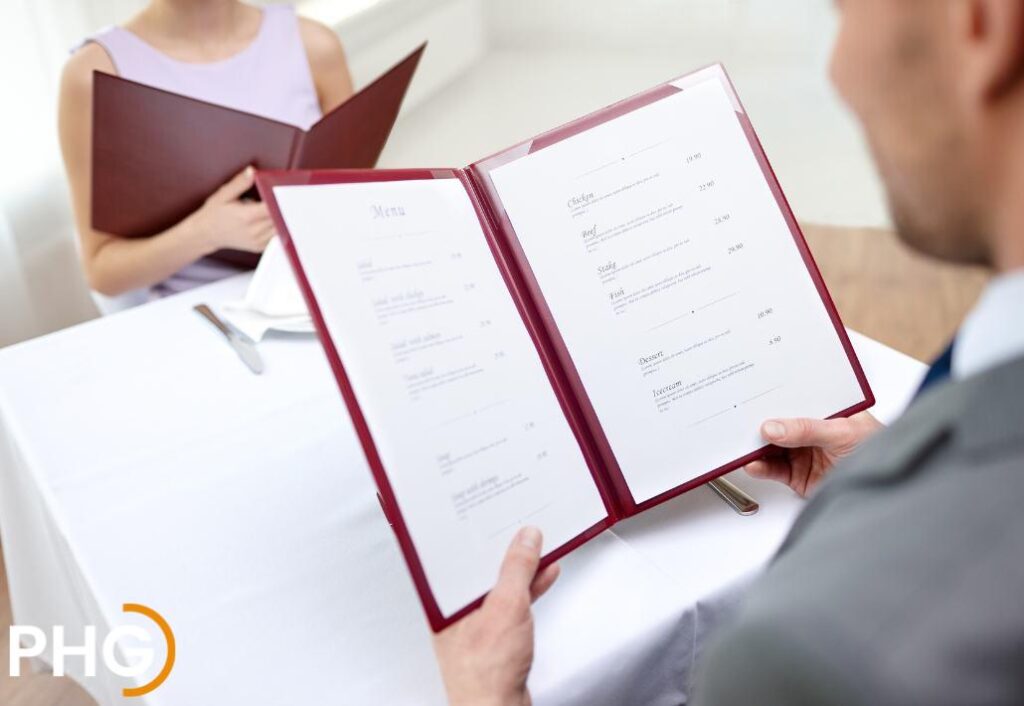
How important is your restaurant menu optimisation?
Menu design is a major factor in how much money is spent at your restaurant. Not only is your menu the gateway to your brand’s identity, personality, and value, it also influences your customers’ buying behaviour and plays a key role in delivering a positive experience.
Restaurant menu optimisation means more than just helping patrons select the right meal. It can drive profitability by adjusting price expectations, steering customers towards more profitable dishes, upselling additional products, and reducing the attention paid to pricing in general.
A highly effective tool that can help achieve these goals is eye-tracking technology. By assessing how diners interact with your menu, eye-tracking provides insights that can be directly applied to menu design for better customer engagement and increased sales.
Menu optimization has become a discipline in its own right and generally incorporates three steps that can be applied to all types of menus, whether on paper, online, via kiosk, or for QSRs.
The first two steps combine careful analysis with human behavioural study to design a menu that should – in theory – deliver the outcomes you need. But it is the use of eye-tracking in the third step that puts theory into practice – allowing you to test and confirm your optimised menu well before it’s seen by your customers.
The process begins with making sure you are completely confident about the business context, constraints and objectives behind your redesign. Once you are clear, the next stage is an evaluation of your current menu pricing using sales and cost data. This will tell you which dishes drive the most sales, revenue and profit, allowing you to identify which dishes to feature more prominently in the new design.
From the number of words in descriptions to the weight of its binding material, every detail of how customers interact with your menu will influence their expectations of you as a brand and their resulting willingness to pay.
In our work with clients, we use a proven behavioural science framework to make sure that their menu delivers an experience that is perfectly aligned with their strategic objectives. Here are a few of the most common considerations for your own:
It’s important to ensure customers are not overwhelmed by too many options – limiting choices can actually increase sales.
More profitable dishes can be positioned in key areas of customer attention – from the middle of the menu to the top right corner, then to the top left.
The location of dishes within a particular section can also have an impact on which ones sell more often – knowing where to put the most profitable dish can make a big difference.
This tactic involves anchoring customers’ price perception to a significantly higher-priced dish, making the other menu items seem more reasonable.
Your menu’s alignment, format and fonts can all be used to encourage less price comparison and minimise attention to price.
Conversely, graphics can be used to increase attention on key areas to help to upsell and improve focus on more profitable options
To avoid overwhelming customers, negative space and boxed-out sections can be employed to help to reduce overcrowding and increase focus on other areas.
The better you can understand how customers engage with your menu, the easier it becomes to position particular dishes in the hot spots where their eyes subconsciously land. But for that to happen, you need the right technology, which leads us to the next step.
With the development of sophisticated eye-tracking software, it’s now possible to assess how diners interact with your menu in minute detail.
Eye trackers use illuminators to create a pattern of near-infrared light on the user’s eyes, with cameras taking high-resolution images of any movements. The images are then processed via an algorithm which finds specific details in the user’s eyes and reflection patterns.
As a result, the user’s eye position and gaze point are calculated to an incredibly fine point using a complex 3D eye model algorithm, delivering a unique level of insight in several key areas:
Eye tracking provides precise data on your customers’ subconscious gaze patterns as they relate to your menu design. ‘Gaze plots’ allow you to follow your customer’s journey around the page, highlighting the areas they were looking at and for how long.
This can be presented via a heatmap, showing red spots which highlight where users are looking the most/longest. This is often indicative of both good and bad user experiences, and by observing subconscious “lingering” on prices, you can gather valuable insight into price sensitivity that cannot be generated from other methods
Historically, a new menu design might have involved gathering verbal feedback from a focus group before putting the updated version in front of paying guests and monitoring the results. But in the words of American anthropologist Margaret Mead: what people say, what people do, and what they say they do are entirely different things.
Because eye tracking returns an exceptionally high quantity of data points, any of the design changes implemented in step 2 can be tested with extreme accuracy, with 30,000 data points returned in just ten areas of interest.
This serves as a valuable validation tool, enabling restaurants to empirically test and confirm the effectiveness of new menu designs before final implementation
Despite inflationary pressures having reduced in the short term, it has never been more challenging for restaurants to improve their profitability. With the right menu design, you can deliver the best possible customer experience while making a significant difference to your bottom line.
Want to learn more about restaurant menu optimisation?